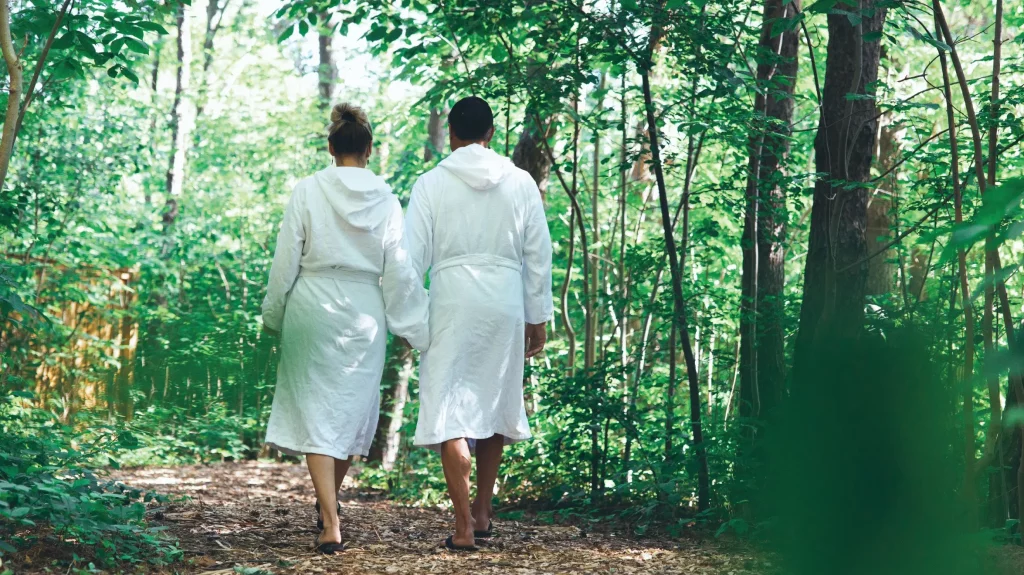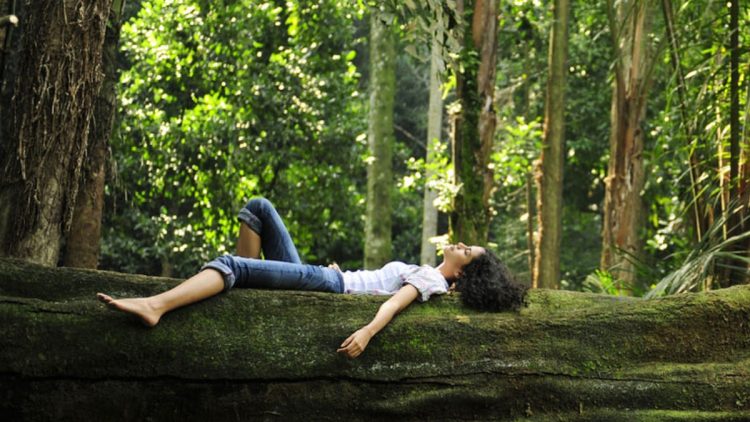In an era where urbanization dominates human experience and screen time exceeds outdoor exposure, the quiet wisdom of the forest has reemerged as a therapeutic necessity rather than a romantic escape. The practice of forest bathing, known as Shinrin-yoku in Japanese, invites individuals to immerse themselves in natural woodland environments with the goal of enhancing well-being. Unlike hiking, which often has a destination, or outdoor fitness, which emphasizes performance, forest bathing is an intentional and unhurried sensory experience that encourages participants to connect with nature in a mindful and embodied way. This practice, deeply rooted in traditional Japanese philosophy and now supported by a growing body of scientific research, has become a cornerstone of modern holistic healing practices, blending ancient ecological understanding with modern mental and physical health needs.
Origins and Philosophy of Forest Bathing
Forest bathing emerged in Japan during the 1980s as a response to rising rates of stress, burnout, and lifestyle-related diseases among the population. With increasing concerns about “karoshi,” or death from overwork, Japanese government officials and health researchers began exploring natural, low-cost interventions that could mitigate stress and promote public health. Shinrin-yoku was born from this initiative, based on the idea that spending time in forests—without goals or structure—could recalibrate the nervous system, strengthen immunity, and restore emotional equilibrium.
The term Shinrin-yoku translates literally as “taking in the forest atmosphere.” This is not about physical exertion or collecting miles on a fitness tracker. Instead, it involves walking slowly, breathing deeply, and awakening one’s senses to the natural world. The rustling of leaves, the scent of moss, the feeling of bark beneath the fingers, and the interplay of light and shadow all contribute to a meditative encounter with nature that activates the parasympathetic nervous system—our body’s rest-and-digest mode.
Scientific Foundations and Health Benefits
Over the last few decades, multiple studies conducted in Japan, South Korea, Finland, and the United States have validated the health claims of forest bathing. One of the most prominent findings relates to stress reduction. Time spent in forest environments has been shown to significantly lower cortisol levels, heart rate, and blood pressure. Participants in forest bathing sessions often exhibit reduced sympathetic nervous system activity (associated with fight-or-flight responses) and increased parasympathetic activity, promoting calm and recovery.
Another key benefit lies in immune system support. Research led by Dr. Qing Li of Nippon Medical School in Tokyo revealed that forest bathing increases the activity and number of natural killer (NK) cells—immune cells that help fight infections and suppress tumor growth. This effect is attributed to phytoncides, organic compounds released by trees and plants, which have antimicrobial properties and trigger beneficial physiological responses in humans.
In addition to physiological benefits, forest bathing has profound effects on mental health. Studies have found that even short-term exposure to forest environments can reduce symptoms of anxiety, depression, and fatigue. Cognitive benefits have also been documented, with improvements in attention span, creativity, and memory retention after spending time in natural settings. For individuals with high-pressure jobs or those recovering from trauma, forest bathing offers a gentle, non-invasive way to support emotional healing and resilience.
The Sensory Gateway to Mindfulness
What sets forest bathing apart from other outdoor activities is its emphasis on sensory engagement. Every step in the forest becomes an invitation to notice—whether it’s the filtered sunlight through the canopy, the texture of leaves underfoot, or the melodic call of birds. By anchoring attention in the present moment through sensory cues, forest bathing cultivates a state of mindfulness that is deeply therapeutic.
This mindfulness is not forced but arises naturally. Unlike meditation that requires sitting still or following a script, forest bathing allows movement, exploration, and spontaneous awareness. It helps individuals reconnect with their own bodily rhythms and cultivate a sense of embodied presence. This somatic aspect of forest bathing makes it particularly useful for individuals dealing with anxiety, trauma, or chronic stress, where traditional mindfulness practices may feel too static or overwhelming.

Urban Forest Bathing and Accessibility
One of the most common concerns about forest bathing is accessibility. Not everyone lives near pristine woodlands or national parks. However, the principles of Shinrin-yoku can be applied in urban environments as well. City parks, botanical gardens, riverside paths, and even tree-lined streets can serve as spaces for restorative nature immersion. The key lies in intention and quality of attention rather than quantity of green space.
Urban forest bathing practitioners encourage people to find “pockets of nature” in their immediate surroundings and engage with them regularly. Micro-moments of connection—like sitting under a tree during lunch break, observing a flowerbed, or listening to the wind through urban greenery—can deliver cumulative benefits over time. In fact, researchers have found that even visual exposure to nature through windows or photographs can reduce stress and improve mood, suggesting that the human brain responds positively to nature cues, regardless of setting.
In many cities around the world, forest therapy guides are now leading group walks in local parks, incorporating elements of mindfulness, breathing, and sensory play into the experience. These programs help make the practice more inclusive, structured, and accessible to urban populations, including elderly individuals, children, and people with mobility challenges.
Integrating Forest Bathing into Holistic Health
As holistic health practices gain popularity, forest bathing is being increasingly integrated into wellness programs, retreats, clinical settings, and mental health services. Hospitals and rehabilitation centers are exploring “green prescriptions” where patients are advised to spend time in nature as part of their treatment plan. Therapists are incorporating forest walks into trauma recovery work. Corporate wellness programs are using guided forest experiences to reduce burnout and foster team cohesion.
In holistic terms, forest bathing aligns with the principles of integrative medicine: addressing the individual as a whole—body, mind, and spirit—within their ecological context. It requires no equipment, costs nothing, and has no side effects. It encourages self-regulation, autonomy, and introspection. Moreover, it reinforces ecological awareness by fostering emotional connections with the natural world, a crucial component of long-term environmental sustainability.
The Forest as Healer and Teacher
One of the most profound aspects of forest bathing is the reorientation it offers—away from human dominance and toward reciprocal relationship with nature. In many indigenous and spiritual traditions, forests are not just scenery but sentient beings, teachers, and sacred spaces. They symbolize growth, transformation, and interdependence. Forest bathing, at its deepest level, can awaken a sense of awe and humility, helping individuals recognize their place within the larger web of life.
This perspective is especially important in the face of climate change, biodiversity loss, and ecological degradation. Forest bathing doesn’t just heal individuals—it cultivates stewards. People who feel connected to nature are more likely to engage in conservation, sustainable living, and community efforts to protect green spaces.
Guided vs. Solo Forest Bathing: What’s Best?
While forest bathing can be practiced alone, many people benefit from guided experiences, especially when first starting out. Certified forest therapy guides are trained to facilitate safe, intentional, and supportive encounters with nature. They use invitations such as “notice the colors around you” or “listen for the most subtle sound” to help participants drop into sensory awareness without judgment or pressure. Guided walks often include time for sharing reflections, which enhances emotional integration and social bonding.
For seasoned practitioners, solo forest bathing can offer deeper introspection and personalized rhythm. Journaling, drawing, or simply sitting still in the same spot over several sessions can deepen one’s relationship with place and self. The ideal approach depends on personal needs, goals, and comfort levels. In either case, consistency is key. Like meditation or exercise, the benefits of forest bathing grow with regular practice.
Limitations and Precautions
While forest bathing is generally safe and beneficial for most people, there are a few precautions to keep in mind. Individuals with allergies to pollen or insect sensitivities should take appropriate measures. Those with mobility issues may require accessible trails. In regions with dangerous wildlife or extreme weather, safety considerations must be prioritized.
Additionally, cultural context matters. Forest bathing should not be appropriated or diluted when introduced into different settings. It’s important to honor the origins of Shinrin-yoku and acknowledge the wisdom of indigenous land practices that have long recognized the healing power of forests.
A Future Rooted in Nature
As humanity faces increasing mental health challenges, chronic disease burdens, and ecological disconnection, the wisdom of the forest offers both remedy and guide. Forest bathing is more than a wellness trend—it’s a cultural shift back toward nature-based living. It asks us to slow down, listen, and reconnect. It reminds us that healing doesn’t always come in the form of pills or screens but through presence, breath, and the quiet companionship of trees.
In integrating forest bathing into modern life, we aren’t just reviving an old practice—we’re creating a future where health is intertwined with the health of the planet. Whether through structured programs or solo meanderings, forest bathing opens a doorway to a more rooted, reflective, and resilient way of being. And in doing so, it helps us remember what it truly means to be well.











































